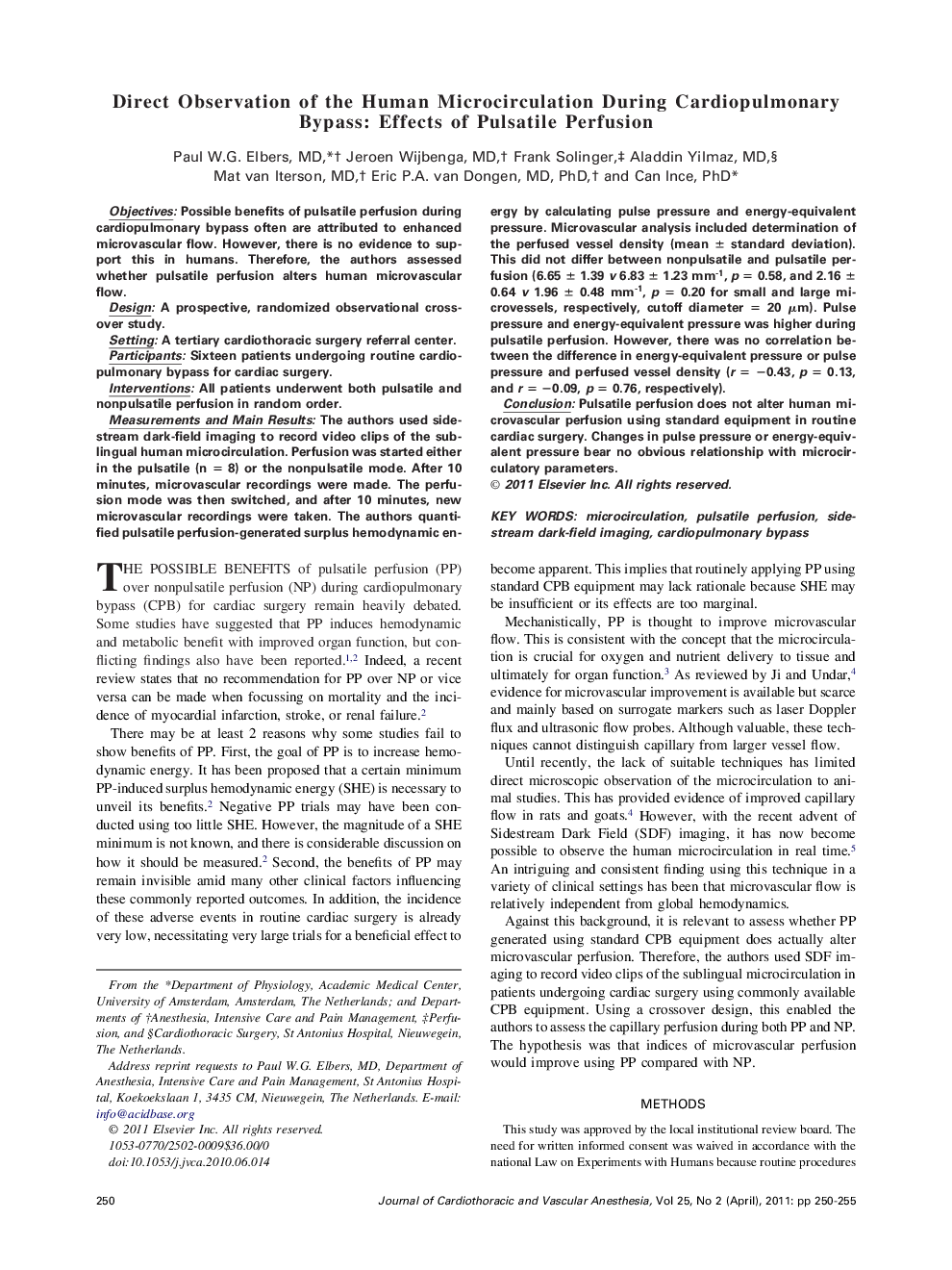| کد مقاله | کد نشریه | سال انتشار | مقاله انگلیسی | نسخه تمام متن |
|---|---|---|---|---|
| 2761419 | 1150194 | 2011 | 6 صفحه PDF | دانلود رایگان |

ObjectivesPossible benefits of pulsatile perfusion during cardiopulmonary bypass often are attributed to enhanced microvascular flow. However, there is no evidence to support this in humans. Therefore, the authors assessed whether pulsatile perfusion alters human microvascular flow.DesignA prospective, randomized observational crossover study.SettingA tertiary cardiothoracic surgery referral center.ParticipantsSixteen patients undergoing routine cardiopulmonary bypass for cardiac surgery.InterventionsAll patients underwent both pulsatile and nonpulsatile perfusion in random order.Measurements and Main ResultsThe authors used sidestream dark-field imaging to record video clips of the sublingual human microcirculation. Perfusion was started either in the pulsatile (n = 8) or the nonpulsatile mode. After 10 minutes, microvascular recordings were made. The perfusion mode was then switched, and after 10 minutes, new microvascular recordings were taken. The authors quantified pulsatile perfusion-generated surplus hemodynamic energy by calculating pulse pressure and energy-equivalent pressure. Microvascular analysis included determination of the perfused vessel density (mean ± standard deviation). This did not differ between nonpulsatile and pulsatile perfusion (6.65 ± 1.39 v 6.83 ± 1.23 mm-1, p = 0.58, and 2.16 ± 0.64 v 1.96 ± 0.48 mm-1, p = 0.20 for small and large microvessels, respectively, cutoff diameter = 20 μm). Pulse pressure and energy-equivalent pressure was higher during pulsatile perfusion. However, there was no correlation between the difference in energy-equivalent pressure or pulse pressure and perfused vessel density (r = −0.43, p = 0.13, and r = −0.09, p = 0.76, respectively).ConclusionPulsatile perfusion does not alter human microvascular perfusion using standard equipment in routine cardiac surgery. Changes in pulse pressure or energy-equivalent pressure bear no obvious relationship with microcirculatory parameters.
Journal: Journal of Cardiothoracic and Vascular Anesthesia - Volume 25, Issue 2, April 2011, Pages 250–255